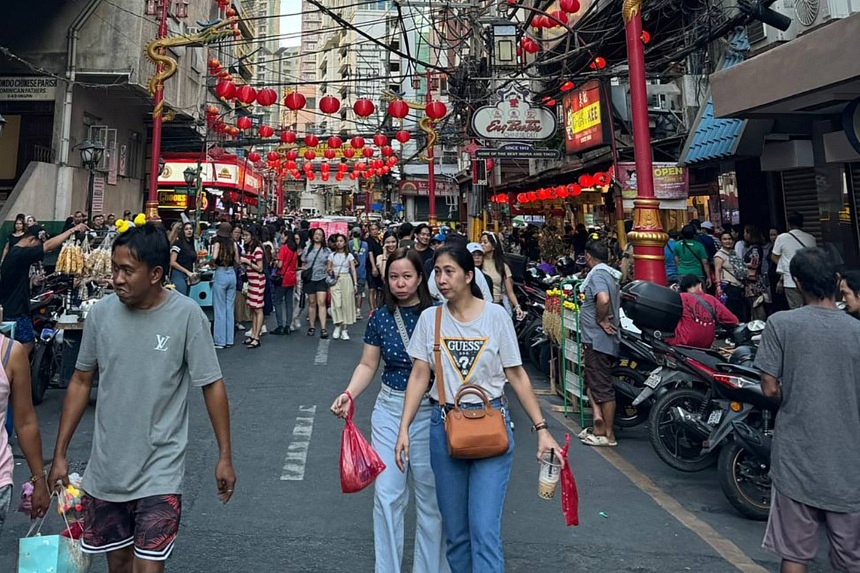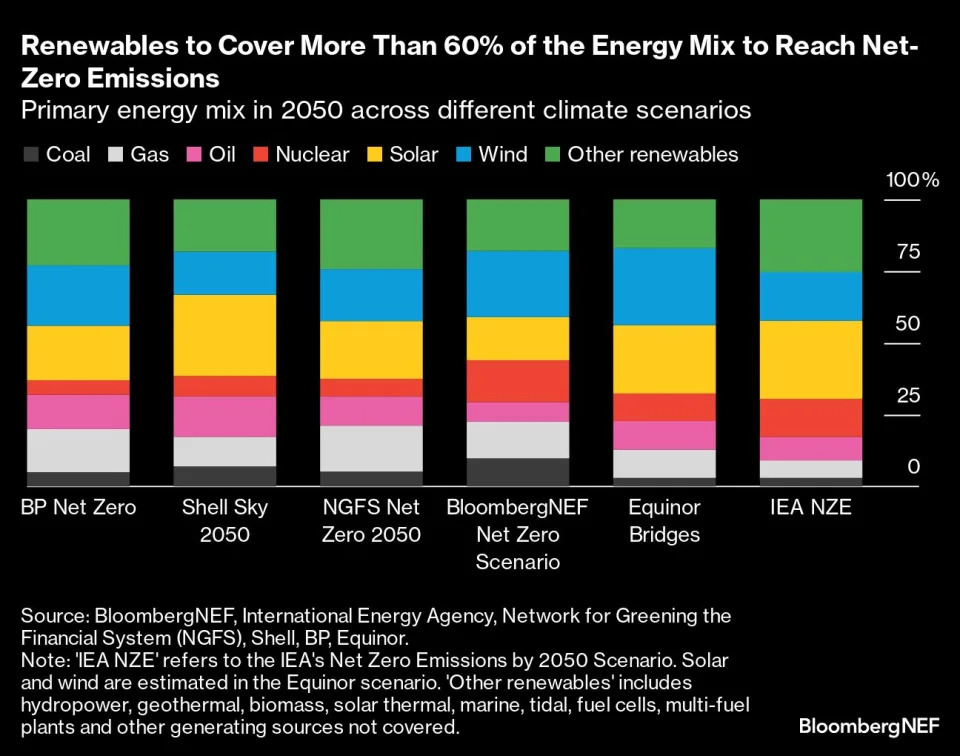
There are 1.2 million Tsinoys or Filipinos of Chinese ancestry in the Philippines.
ST PHOTO: MARA CEPEDA
Mara Cepeda
Philippines Correspondent
Sep 02, 2024,
MANILA – The curious case of a former Philippine town mayor who fled the country after being accused of being a Chinese spy and crime boss is stoking fears of discrimination among Chinese-Filipinos.
Locally called Chinoys or Tsinoys, Filipino nationals who are of Chinese ancestry fear that the case of former Bamban mayor Alice Guo is fanning the flames of Sinophobia amid Manila’s dispute with Beijing in the South China Sea.
Filipinos’ social media feeds have been flooded with memes and videos criticising her alleged links to the country’s online casino industry, or Philippine offshore gaming operators (Pogos) – mostly Chinese-backed and now banned.
Filipinos were even more outraged when Guo, who is believed to be a Chinese national named Guo Hua Ping, escaped from the Philippines in August despite facing multiple probes for her alleged links to crime syndicates.
Historian Meah Ang See, a Chinese-Filipino, told The Straits Times that some Tsinoys have already been experiencing what she described as microaggression from fellow Filipinos. The latter have teased them about whether they know Guo personally or have anything to do with Pogos.
Ms Ang See was formerly director of the Kaisa Para sa Kaunlaran organisation, which advocates for Tsinoys’ integration into Philippine society. She is also a former president of Bahay Tsinoy, a museum on the ethnic Chinese people’s contributions to Philippine history.
“We’re not Pogos. We are living our lives as Filipinos. We definitely are Filipino citizens. We are legal. We are not involved in crime,” she added.
Some netizens mocked Guo’s accent and looks in posts about her evasive answers when she faced Filipino senators for the first time in May.
“She sounds like she works at the Shenzhen sorting centre,” one Facebook user wrote, in reference to a distribution compound in China where Filipinos’ orders from Chinese e-commerce shops are usually packed before shipment.
For Chinese-Filipino author and podcaster Cedric Cheng, comments like this indicate that some Filipinos are still unable to distinguish between Tsinoys and Chinese nationals living or working in the Philippines.
In an episode of the Now Steaming: Conversations On Tsinoy Life podcast on Aug 5, he said Guo’s case has sparked a “new wave of Sinophobia” online and could lead to “hostile interactions” against Tsinoys offline.
Ms Ang See said there are some 1.2 million Tsinoys, which is about 1 per cent of the Philippines’ total population. This tally does not include the Chinese nationals working in the Philippines, whose number is not readily available.
The Tsinoy community has contributed much to the nation’s history since the first wave of Chinese immigrants moved to Manila from Fujian province in the 1500s.
Chinese influence has since seeped through Philippine cuisine, culture and traditions. The oldest Chinatown in the world, established in 1594, is located in the heart of the capital Manila, drawing millions of visitors each year for its Chinese-Filipino food and Chinese New Year festivities.
Despite these rich ties, anti-Chinese sentiments have been growing among Filipinos in recent years as Beijing ramped up its aggressive actions against Philippine ships in the disputed South China Sea.
These sentiments, coupled with anger over the Guo case, have spilt over to confront some Tsinoys. Some have been asked which side they would support should war erupt between the Philippines and China over the disputed waterway.

Mara Cepeda
Philippines Correspondent
Sep 02, 2024,
MANILA – The curious case of a former Philippine town mayor who fled the country after being accused of being a Chinese spy and crime boss is stoking fears of discrimination among Chinese-Filipinos.
Locally called Chinoys or Tsinoys, Filipino nationals who are of Chinese ancestry fear that the case of former Bamban mayor Alice Guo is fanning the flames of Sinophobia amid Manila’s dispute with Beijing in the South China Sea.
Filipinos’ social media feeds have been flooded with memes and videos criticising her alleged links to the country’s online casino industry, or Philippine offshore gaming operators (Pogos) – mostly Chinese-backed and now banned.
Filipinos were even more outraged when Guo, who is believed to be a Chinese national named Guo Hua Ping, escaped from the Philippines in August despite facing multiple probes for her alleged links to crime syndicates.
Historian Meah Ang See, a Chinese-Filipino, told The Straits Times that some Tsinoys have already been experiencing what she described as microaggression from fellow Filipinos. The latter have teased them about whether they know Guo personally or have anything to do with Pogos.
Ms Ang See was formerly director of the Kaisa Para sa Kaunlaran organisation, which advocates for Tsinoys’ integration into Philippine society. She is also a former president of Bahay Tsinoy, a museum on the ethnic Chinese people’s contributions to Philippine history.
“We’re not Pogos. We are living our lives as Filipinos. We definitely are Filipino citizens. We are legal. We are not involved in crime,” she added.
Some netizens mocked Guo’s accent and looks in posts about her evasive answers when she faced Filipino senators for the first time in May.
“She sounds like she works at the Shenzhen sorting centre,” one Facebook user wrote, in reference to a distribution compound in China where Filipinos’ orders from Chinese e-commerce shops are usually packed before shipment.
For Chinese-Filipino author and podcaster Cedric Cheng, comments like this indicate that some Filipinos are still unable to distinguish between Tsinoys and Chinese nationals living or working in the Philippines.
In an episode of the Now Steaming: Conversations On Tsinoy Life podcast on Aug 5, he said Guo’s case has sparked a “new wave of Sinophobia” online and could lead to “hostile interactions” against Tsinoys offline.
Ms Ang See said there are some 1.2 million Tsinoys, which is about 1 per cent of the Philippines’ total population. This tally does not include the Chinese nationals working in the Philippines, whose number is not readily available.
The Tsinoy community has contributed much to the nation’s history since the first wave of Chinese immigrants moved to Manila from Fujian province in the 1500s.
Chinese influence has since seeped through Philippine cuisine, culture and traditions. The oldest Chinatown in the world, established in 1594, is located in the heart of the capital Manila, drawing millions of visitors each year for its Chinese-Filipino food and Chinese New Year festivities.
Despite these rich ties, anti-Chinese sentiments have been growing among Filipinos in recent years as Beijing ramped up its aggressive actions against Philippine ships in the disputed South China Sea.
These sentiments, coupled with anger over the Guo case, have spilt over to confront some Tsinoys. Some have been asked which side they would support should war erupt between the Philippines and China over the disputed waterway.

Filipinos’ social media feeds have been flooded with memes and videos criticising former Bamban town mayor Alice Guo’s alleged links to the country’s online casino industry. She has fled the country.
PHOTO: SENATE OF THE PHILIPPINES
In the same Now Steaming podcast episode, Tsinoy broadcaster Kimberly Mas shared that her cousins were recently at a shopping mall when a male Filipino came up to them and said the “West Philippine Sea is ours” before running away.
The West Philippine Sea is Manila’s official term for the eastern parts of the South China Sea that lie within the Philippines’ exclusive economic zone, but China is also claiming them.
“My cousins didn’t respond. They just let it go,” said Ms Mas. “But if I were them, I would have told the guy: ‘Yeah, it is ours.’”
It is a scenario all too familiar for Tsinoys given recent tensions between the Philippines and China, said Ms Ang See.
“We’re Filipino. Why are you even asking us about loyalty? That should be automatic,” she added. “So now Tsinoys are rethinking our position in Philippine society. Are we really accepted?”
But for Dr Sidney Bata, Chinese studies programme director at Ateneo de Manila University, comments like this highlight Filipinos’ growing distrust of China, given its actions towards the Philippines in the sea dispute.
A March 2024 survey by local pollster OCTA Research showed that 91 per cent of 1,200 Filipino respondents said they distrust China, up from 58 per cent in 2022.
“I don’t think it’s racism. I think the conversations now are only having undertones of it because people are becoming distrustful (of China) first. People are angry by these things happening (in the South China Sea),” said Dr Bata.
In the same Now Steaming podcast episode, Tsinoy broadcaster Kimberly Mas shared that her cousins were recently at a shopping mall when a male Filipino came up to them and said the “West Philippine Sea is ours” before running away.
The West Philippine Sea is Manila’s official term for the eastern parts of the South China Sea that lie within the Philippines’ exclusive economic zone, but China is also claiming them.
“My cousins didn’t respond. They just let it go,” said Ms Mas. “But if I were them, I would have told the guy: ‘Yeah, it is ours.’”
It is a scenario all too familiar for Tsinoys given recent tensions between the Philippines and China, said Ms Ang See.
“We’re Filipino. Why are you even asking us about loyalty? That should be automatic,” she added. “So now Tsinoys are rethinking our position in Philippine society. Are we really accepted?”
But for Dr Sidney Bata, Chinese studies programme director at Ateneo de Manila University, comments like this highlight Filipinos’ growing distrust of China, given its actions towards the Philippines in the sea dispute.
A March 2024 survey by local pollster OCTA Research showed that 91 per cent of 1,200 Filipino respondents said they distrust China, up from 58 per cent in 2022.
“I don’t think it’s racism. I think the conversations now are only having undertones of it because people are becoming distrustful (of China) first. People are angry by these things happening (in the South China Sea),” said Dr Bata.
Philippine ex-mayor linked to Chinese crime rings fled to Singapore in July: Filipino authorities
In recent months, China has been obstructing Philippine ships sending supplies to a World War II-era warship grounded at the disputed Second Thomas Shoal in the South China Sea. A skirmish between the China Coast Guard and the Philippine Navy in these waters in June caused one Filipino soldier to lose a thumb.
Dr Bata added that this distrust may also be rooted in the Philippines’ colonial past, having been conquered by Spain, the United States and Japan. The Filipinos’ anger is now directed at China because it has been deemed the Philippines’ modern-day aggressor.
As emotions continue to run high amid the manhunt for Guo, the crackdown on Pogos and geopolitical tensions with Beijing, Tsinoys can only hope that their countrymen would focus more on the facts when discussing these issues.
Ms Ang See said Tsinoys’ Chinese ethnic heritage should be kept out of the conversation.
“When you say that anything Chinese is now illegal, what about us Chinese-Filipinos? What about the Chinese nationals who are following our laws? It’s like you’re lumping everyone together,” she added.
“That’s what we want to separate.”















